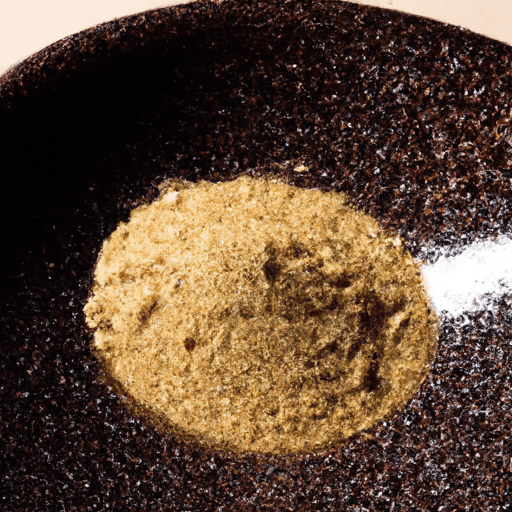The Delightful Flavor of Asian Toasted Sesame Dressing
If you’re a fan of Asian cuisine, you’ve likely encountered the aromatic and flavorful Asian toasted sesame dressing. This versatile dressing has won the hearts of food enthusiasts around the world with its unique taste and ability to elevate a variety of dishes. In this blog post, we’ll dive into the wonderful world of Asian toasted sesame dressing, exploring its taste, common uses in cooking, nutritional value, and uncovering some interesting history and facts.
The Taste of Asian Toasted Sesame Dressing
Asian toasted sesame dressing offers a rich, nutty, and subtly sweet flavor profile. The foundation of this dressing is toasted sesame oil, which imparts its distinct nutty aroma. Combined with soy sauce and rice vinegar, the dressing achieves a delightful balance of umami and tanginess. Toasted sesame seeds are often added to enhance the texture and provide an extra burst of nutty flavor. The result is an irresistible dressing that can elevate any dish it accompanies.
Common Uses in Cooking
Asian toasted sesame dressing is incredibly versatile and can be used in a wide range of dishes. Its rich flavor pairs well with various ingredients, making it a popular choice for salads, stir-fries, and marinades. Drizzle it over a fresh garden salad, toss it with steamed vegetables, or use it as a dressing for cold noodle salads. You can also marinate chicken, beef, or tofu with this dressing to infuse a delightful oriental taste. Whether you’re preparing a light summer salad or a hearty stir-fry, Asian toasted sesame dressing effortlessly enhances the overall flavor and aroma of your dish.
Nutritional Value
In addition to its delectable taste, Asian toasted sesame dressing offers a range of nutritional benefits. Sesame oil is an excellent source of monounsaturated fats, which are considered heart-healthy fats. It also contains vitamin E, an antioxidant that protects cells from damage. Furthermore, sesame seeds are a good source of important minerals, such as calcium, iron, and magnesium. However, it’s worth mentioning that the dressing should be used in moderation due to its relatively high fat content.
Interesting History and Facts
Sesame has a long history in Asian cuisine, dating back thousands of years. The use of sesame seeds is believed to have originated in ancient Babylon, where they were regarded as a symbol of immortality. Over time, sesame seeds spread across Asia, becoming an integral part of various culinary traditions. Asian toasted sesame dressing is just one example of the many delicious dishes that incorporate this beloved ingredient.
Fun fact: Sesame seeds are not only valuable in the kitchen but also play a significant role in traditional medicine. In Ayurveda, sesame oil is believed to possess therapeutic properties and is used for massage and oil pulling to improve oral health.
Conclusion
Asian toasted sesame dressing is a culinary gem that adds a burst of flavor to any dish it graces. Its nutty and aromatic taste, versatility in cooking, and nutritional benefits make it a favorite among food enthusiasts. Whether you’re exploring Asian cuisine or simply looking to elevate your everyday meals, this dressing is sure to delight your taste buds. So, why not give it a try and unlock a world of delicious possibilities in your own kitchen?
Asian Toasted Sesame Dressing
Origin: Asian Toasted Sesame Dressing is a savory and nutty dressing that originated in Asian cuisine. It draws inspiration from the traditional flavors found in East Asian cooking, particularly in Chinese, Korean, and Japanese cuisine.
Ingredients: Typically, Asian Toasted Sesame Dressing is made with toasted sesame oil, soy sauce, rice vinegar, garlic, ginger, and sweeteners such as honey or sugar. Some variations may also include chili peppers or sesame seeds.
Common Uses: Asian Toasted Sesame Dressing is commonly used as a salad dressing, marinade, or dipping sauce. Its rich umami flavor profile pairs well with various vegetables, grains, noodles, and proteins. It is often drizzled over mixed greens, coleslaw, chicken, tofu, or used as a dressing for cold noodle dishes.
Nutritional Benefits: Asian Toasted Sesame Dressing offers a range of nutritional benefits. It is a source of healthy fats, primarily coming from sesame oil, which can contribute to overall heart health. Sesame oil also contains vitamin E, which acts as an antioxidant. Additionally, the dressing may contain other ingredients with potential health benefits, such as ginger (known for its anti-inflammatory properties) and garlic (which may support the immune system).
Unique Properties: Asian Toasted Sesame Dressing is known for its distinct nutty and savory flavor. The toasted sesame oil used in the dressing provides a depth of aroma and taste. It has a rich and slightly thick consistency, allowing it to cling well to salads and coat other ingredients. The dressing’s versatility and ability to enhance the flavors of various dishes make it a popular choice in many Asian-inspired recipes.
Historical Significance: While the exact historical significance of Asian Toasted Sesame Dressing is difficult to pinpoint, sesame has a long history of culinary use in Asian cultures. Sesame seeds and their oil have been utilized for thousands of years in various dishes and for their nutritional benefits. The combination of sesame oil, soy sauce, and vinegar, which forms the base of the dressing, draws on these historical culinary traditions and adds a modern twist.




Use the share button below if you liked it.
It makes me smile, when I see it.